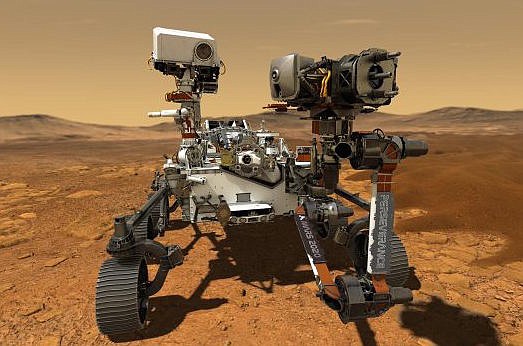 Facebook
Facebook
 X
X
 Instagram
Instagram
 TikTok
TikTok
 Youtube
Youtube

The Sun Strides North in February, swinging higher across the sky each successive day. Already quite noticeable is the change in the time of sunset, currently almost a minute later per day, and sunrise, currently almost a minute earlier per day.
Ornamental Pear Trees are bursting into bloom all over town. The thousands of white blossoms appear in sheets and clusters, rather like snow when viewed from a distance. Nice specimens can be seen along Lake Murray Boulevard, along Clairemont Mesa Boulevard between Highway 163 and Interstate 15, and in parts of downtown San Diego.
Big Ocean Swells and wild surf conditions occurring during San Diego's winter season tend leave certain area beaches partially or wholly denuded of sand. The powerful waves pull sand off the beach and move it into deeper waters offshore, leaving behind deposits of rounded cobbles where sand has been removed. During spring and summer gentle wave action returns much of the sand, usually in time for the arrival of summer tourists. Artificial sand replenishment projects are usually in the works, too, whereby sand dredged from waters offshore is transported back to the shoreline.

February is a busy month for arriving spacecraft. The United Emirates' Hope craft will take up high-altitude orbit on February 9th to study the planet's atmosphere. China's Tianwen-1 orbiter, lander and rover will arrive less than a day later. The largest and most ambitious mission is NASA's Perseverance rover, which will land on the 18th to, among other things, collect samples for future return to Earth and launch a miniature reconnaissance helicopter.
Why are the three missions bunched together? Because the minimum-energy transfer orbit to get a craft from Earth to Mars becomes available only when the two planets line up a particular way with respect to each other every 2.14 years. Dedicated Mars observers will recognize this as the synodic period of Mars with respect to Earth — the same as the average time from one opposition to the next. All three missions launched last July.
The above comes from the Outdoors listings in the Reader compiled by Jerry Schad, author of Afoot & Afield in San Diego County. Schad died in 2011. Planet information from SkyandTelescope.org.


The Sun Strides North in February, swinging higher across the sky each successive day. Already quite noticeable is the change in the time of sunset, currently almost a minute later per day, and sunrise, currently almost a minute earlier per day.
Ornamental Pear Trees are bursting into bloom all over town. The thousands of white blossoms appear in sheets and clusters, rather like snow when viewed from a distance. Nice specimens can be seen along Lake Murray Boulevard, along Clairemont Mesa Boulevard between Highway 163 and Interstate 15, and in parts of downtown San Diego.
Big Ocean Swells and wild surf conditions occurring during San Diego's winter season tend leave certain area beaches partially or wholly denuded of sand. The powerful waves pull sand off the beach and move it into deeper waters offshore, leaving behind deposits of rounded cobbles where sand has been removed. During spring and summer gentle wave action returns much of the sand, usually in time for the arrival of summer tourists. Artificial sand replenishment projects are usually in the works, too, whereby sand dredged from waters offshore is transported back to the shoreline.

February is a busy month for arriving spacecraft. The United Emirates' Hope craft will take up high-altitude orbit on February 9th to study the planet's atmosphere. China's Tianwen-1 orbiter, lander and rover will arrive less than a day later. The largest and most ambitious mission is NASA's Perseverance rover, which will land on the 18th to, among other things, collect samples for future return to Earth and launch a miniature reconnaissance helicopter.
Why are the three missions bunched together? Because the minimum-energy transfer orbit to get a craft from Earth to Mars becomes available only when the two planets line up a particular way with respect to each other every 2.14 years. Dedicated Mars observers will recognize this as the synodic period of Mars with respect to Earth — the same as the average time from one opposition to the next. All three missions launched last July.
The above comes from the Outdoors listings in the Reader compiled by Jerry Schad, author of Afoot & Afield in San Diego County. Schad died in 2011. Planet information from SkyandTelescope.org.
Comments